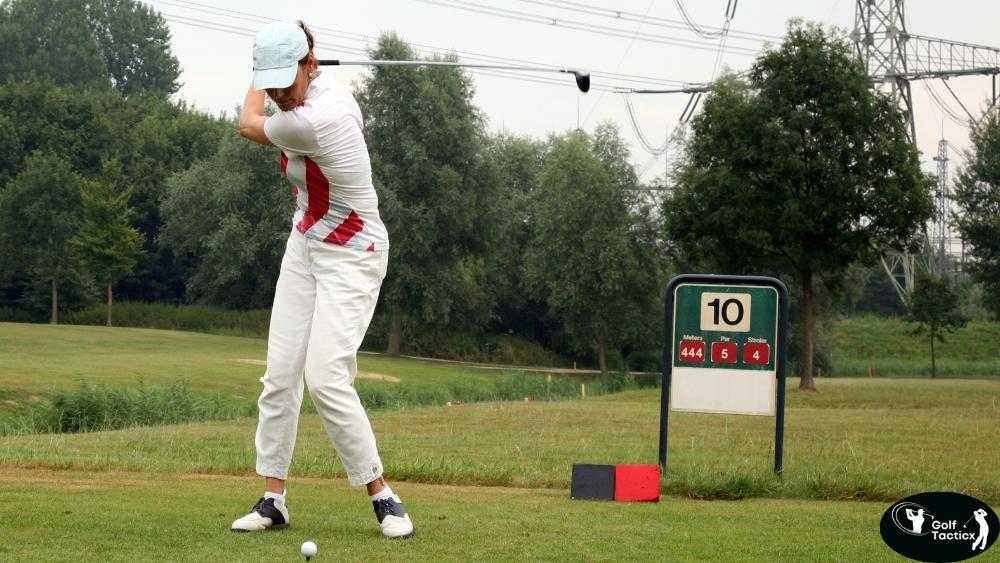In the previous post, we explored How To Use Shot Tracking For Golf Analysis, helping you understand how tracking data can improve your strategy and overall performance.
Tracking the right statistics in golf is essential to improving your game. It’s not just about how well you play on any given day, but about understanding the bigger picture your strengths, weaknesses, and areas for improvement. But with so many different metrics to track, where should you start?
In this post, we’ll walk you through the Key Golf Statistics To Track For Improvement so that you can identify areas that need ultimately, how to optimize your performance on the course. Let’s dive right in!
Why Should You Track Statistics in Golf?
You might be wondering, “Why should I bother with all these numbers?” The answer is simple: data-driven improvement.
When you track statistics, you’re not just guessing where you need to improve. Instead, you’re gathering objective insights that can direct your practice sessions, help you adjust your strategy, and ultimately, improve your consistency.
By regularly tracking key statistics, you’ll be able to identify trends in your game, make more informed decisions, and set specific goals. These goals are actionable and measurable, which is a crucial part of improvement.
Top Golf Statistics to Track
So, what are the key stats that can make the most impact on your game? Let’s break down the most useful ones.
Fairways Hit
Fairways are one of the most important aspects of the game. A solid drive that lands on the fairway sets you up for a better second shot and increases your chances of hitting the green in regulation. Missing the fairway can result in tough lies and more difficult approach shots.
Why Track It?
If you’re hitting less than 50% of fairways, it might be time to work on your driving accuracy.
Track your left-to-right or right-to-left miss to help adjust your swing mechanics or club selection.
How to Track It:
Mark whether your drive ends up on the fairway or in the rough. Keep track of the number of fairways hit versus missed.
Greens in Regulation
GIR is the percentage of greens you hit in the minimum number of strokes two shots for a par 3, three shots for a par 4, and so on. Hitting the green in regulation gives you a chance to make par or better.
Why Track It?
If you’re consistently missing greens, you might need to focus on your approach shots.
GIR helps identify whether you’re missing short or long, which can direct your focus on refining your distance control.
How to Track It:
After each approach shot, mark if you successfully land the ball on the green in the required number of shots. Keep track of how often you achieve GIR.
Putts Per Round
This is a key stat that measures your putting efficiency. The fewer putts you take, the better your overall performance will be. A great ball striker can still struggle to score if they aren’t able to hole out efficiently on the greens.
Why Track It?
If your putts per round are high, it might indicate that you need to work on your short game or putting technique.
Tracking putts helps highlight whether you’re missing short or long putts, giving insight into stroke mechanics.
How to Track It:
Record how many putts you take per hole. Count all the putts from the tee to the hole, and then calculate your total for the round.
Average Drive Distance
This stat tracks the average distance of your tee shots. While distance alone doesn’t guarantee success, being able to consistently hit the ball far and straight is a valuable asset.
Why Track It?
If your average drive distance is shorter than it should be, you may need to work on your swing mechanics or club selection to maximize your distance.
Tracking this stat can help you understand how well you’re utilizing your driver and whether you need to make any adjustments.
How to Track It?
Measure the distance of each tee shot and average it out over a set number of rounds to determine your driving distance.
Scrambling
Scrambling refers to your ability to save par after missing the green. A player with a strong scrambling game can recover from a poor approach shot and still make par, which can keep their score low.
Why Track It?
If your scrambling percentage is low, it may be time to focus on improving your chipping, pitching, and bunker play.
This stat can show you how well you’re handling difficult situations around the green.
How to Track It?
Record how often you successfully get the ball up and down from off the green. This includes chips, pitches, and putts from around the green.
Strokes Gained
Strokes Gained is an advanced statistic that compares your performance to the average of players at your skill level. It breaks down performance into several categories: off the tee, on approach shots, around the green, and putting.
Why Track It?
This metric provides a deeper look into the parts of your game that matter most, giving you a very precise idea of where to improve.
It breaks down each phase of the game, so you know whether you need to work on driving, iron play, chipping, or putting.
How to Track It?
Strokes Gained data is often available in shot-tracking systems or golf apps. By analyzing your data, you can see which areas of your game need the most attention.
Penalty Strokes
Penalty strokes occur when you hit the ball out of bounds, in the water, or into a hazard. They add unnecessary strokes to your score and can have a big impact on your final score.
Why Track It?
Keeping track of penalty strokes helps you identify where you’re getting into trouble on the course.
It can help you focus on reducing mistakes and adjusting your strategy to avoid penalties.
How to Track It?
Simply keep track of any penalties you incur during your round. Record the reason for the penalty (out of bounds, water, etc.) to see if there’s a pattern.
How to Analyze Your Statistics
Now that you’ve been tracking your stats, it’s time to make sense of the numbers. Here’s how you can use the data to identify areas for improvement:
Identify Patterns
If your fairways hit percentage is low, you might need to focus on your driving accuracy. If your greens in regulation are low, your approach shots could be the issue.
Analyzing patterns over multiple rounds gives you a more accurate understanding of your weaknesses and strengths.
Set Specific Goals
Based on your stats, set measurable goals. For example, if your GIR is 40%, aim for 45% next month.
Your goals should be specific, actionable, and time-bound. For instance, “I will reduce my average putts per round from 33 to 30 within the next 4 weeks.”
Target Areas for Practice
If you notice that you’re missing a lot of fairways to the left, it could indicate an issue with your alignment or swing path.
If your scrambling stats are low, spend more time practicing chips, pitches, and bunker shots to improve your short game.
Tools and Apps to Track Your Stats
To make tracking your stats easier, you can use various apps and tools. Some of the most popular include:
Arccos Golf: Tracks detailed statistics for each shot you take and provides data-driven insights into your game.
Golfshot: Offers GPS distances, shot tracking, and club recommendations based on your performance.
Shot Scope: Automatically tracks your shots and provides a breakdown of your stats, including strokes gained.
Game Golf: Tracks shots and provides a scorecard with insights on where you’re improving.
Conclusion
Tracking key golf statistics isn’t just for the pros; it’s a powerful tool for any golfer looking to improve their game. By focusing on fairways hit, greens in regulation, putting stats, driving distance, scrambling, and other key metrics, you’ll have a clearer picture of where to focus your efforts.
Tracking these stats regularly will help you fine-tune your game, identify weaknesses, and set measurable goals for improvement.
In our next post, we’ll explore how to adjust your practice sessions based on performance data. Stay tuned for more tips on improving your golf game.
















Leave a Reply